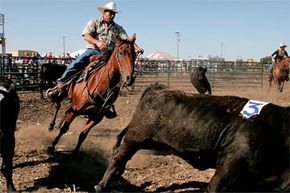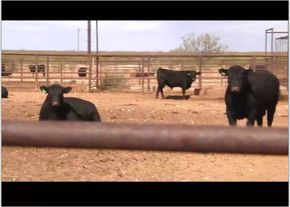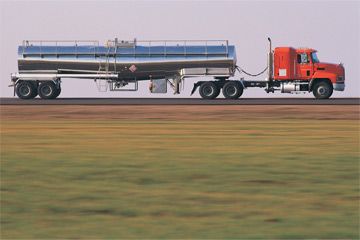Cattle sorting and penning are two popular rodeo sports that are often referred to together as simply "sorting and penning." At their most basic, they involve a handful of riders, or cowboys, and small herds of calves.
While team penning is often considered more difficult than team sorting, you don't have to be an experienced rider or ranch hand to learn these sports [source: KETC]. Classes are taught through rodeo associations or at ranches and farms throughout the United States. Sometimes they can be found in unexpected places. One New York Times story highlighted a ranch in Bethany, Conn., just 10 miles (16 kilometers) northwest of New Haven, where C&S Ranches conducts practice sessions for various rodeo sports, including team sorting.
Advertisement
People of all ages compete in these sports, even children as young as 5 years old, causing some organizations to advertise it as a family-oriented activity. The Ranch Sorting National Championships (RSNC), for example, bills ranch sorting, a type of cattle sorting, as the "funnest family sport on a horse" and the "#1 equine family sport" [source: RSNC].
Like most popular sports, you'll find national and international championship events for team sorting and penning. But there are also many events for amateurs and various classification levels for professionals, allowing rookies to compete separately from higher-rated contestants. The RSNC distinguishes among competitors by rating them on a scale of one to nine. Similarly, the United States Team Penning Association rates riders, based on skill level, from one to seven while also dividing them into junior and senior age groups.
On the next page, we'll look at some of the rules of cattle sorting.
Advertisement















